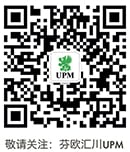Increasing the recyclability of packaging materials is at the heart of the circular economy discussion in Europe. However, is there a case to be made for biodegradability and compostability in countries where recycling infrastructure either does not exist or has yet to reach the scale needed to match the growing demand in many countries?
Outside of Europe, particularly in the Asia-Pacific (APAC) region, sustainable packaging has become a top priority among consumers, especially for food-related products.
Transforming from linear to circular
Two-thirds of packaging waste was recycled in the EU-27 during 2018, according to figures from the European Environment Agency. Europe’s cohesive and unifying legislation, as well as its economic maturity and development, have made it easier for members to implement regional initiatives and polices, as well as ensure their broad adoption.
“In comparison, Asia is far more diverse and disparate from a regulatory perspective and in terms of different rates of economic progression. This plays out in their approach to end-of-life packaging,” says Ciaran Little, Global VP of Business Development and Director of Operations for Asia-Pacific, Smithers.
Japan has had a long-term sophisticated approach to material collection and China, which displaced the US as the largest global packaging market, has radically changed its policy in terms of importing materials and domestic recycling: “India and others in Asia are looking at outright bans of certain materials. There might be less cohesion overall, but there’s no less energy and focus on the issue.”
Growing focus on consumer education
While the focus across the region is being driven by a combination of major brands, NGO activity, policy changes and growing pressure, Little believes that consumer education is often underestimated as an issue.
“Consumers want to understand their options for packaging materials, but the complexity can make it hard to give them clear and simple directions on recyclability and end-of-life options. We’re getting to the point where consumers understand the packaging materials, the issues involved in their collection and reuse, as well as the choices they should be making,” he notes.
He adds that there is also a need to make the economics of recycling circularity more viable, which will create markets for post-consumer materials that have volume and scale: “This will result in more investment in recycling infrastructure and the packaging technology to support it.”
Recycling is the best option, compostability a good second
For countries and regions that have yet to scale-up or heavily invest in recycling schemes or infrastructure, compostability is an advantageous substitute, highlights Leena Kunnas, Senior Manager of Product Development, R&D, UPM Specialty Papers.
While ‘recyclability’ is a term generally understood by consumers, biodegradability and compostability can leave them confused. Simply put, all compostable material is biodegradable, but not all biodegradable material is compostable. There are also different standards for compostability around the world.
“Fundamentally, if a material is classed as compostable it has to disintegrate properly and create a compost that is suitable for plants to germinate and grow. It’s also not allowed to contain harmful metals,” briefly explains Kunnas.
She adds that recycling is the best choice when it comes to end-of-life options, noting that “industrial composting comes second, especially if you have fibre-based packaging material that has been contaminated by food and is unsuitable for recycling. In the industrial composting process, carbon and nutrients are circulated back to biocycle and the released methane is captured and utilised as an energy source.”
In her view, biodegradability often leaves room for the idea that littering is acceptable.
Positive recyclability characteristics
According to 2018 statistics from Eurostat, the recycling rate in Europe for fibre-based packaging materials was 83 percent, which was higher than metal (81%), glass (76%) and plastics (40%).
Fibres are usually recycled 3-4 times, which is quite high in the EU. However, a German Environment Agency report found that it is technically possible to recycle pure fibre more than 10 times. “The properties worsen during the first recycling loop, but then remain stable going forward,” explains Kunnas.
Those high recycling rates aren’t always reached because the fibrous material is used for certain applications, such as tissue paper, where recycling is not possible, or it is contaminated by certain additives or processes: “Today, it is positive to see that a lot of attention is paid to packaging design to ensure that the fibre retains its good recyclability characteristics.”
Governmental guidance has been behind many of the packaging waste directives around the world and brand owners are also setting their own targets.
“They are now stating how they use less material for packaging and how it is recyclable. All these important environmental and sustainability issues are being driven by legislators, brand owners, consumers and public opinion,” concludes Kunnas with a smile.
Read on to learn more about the role UPM Specialty Papers is playing with its sustainable packaging papers.
Text: Asa Butcher
